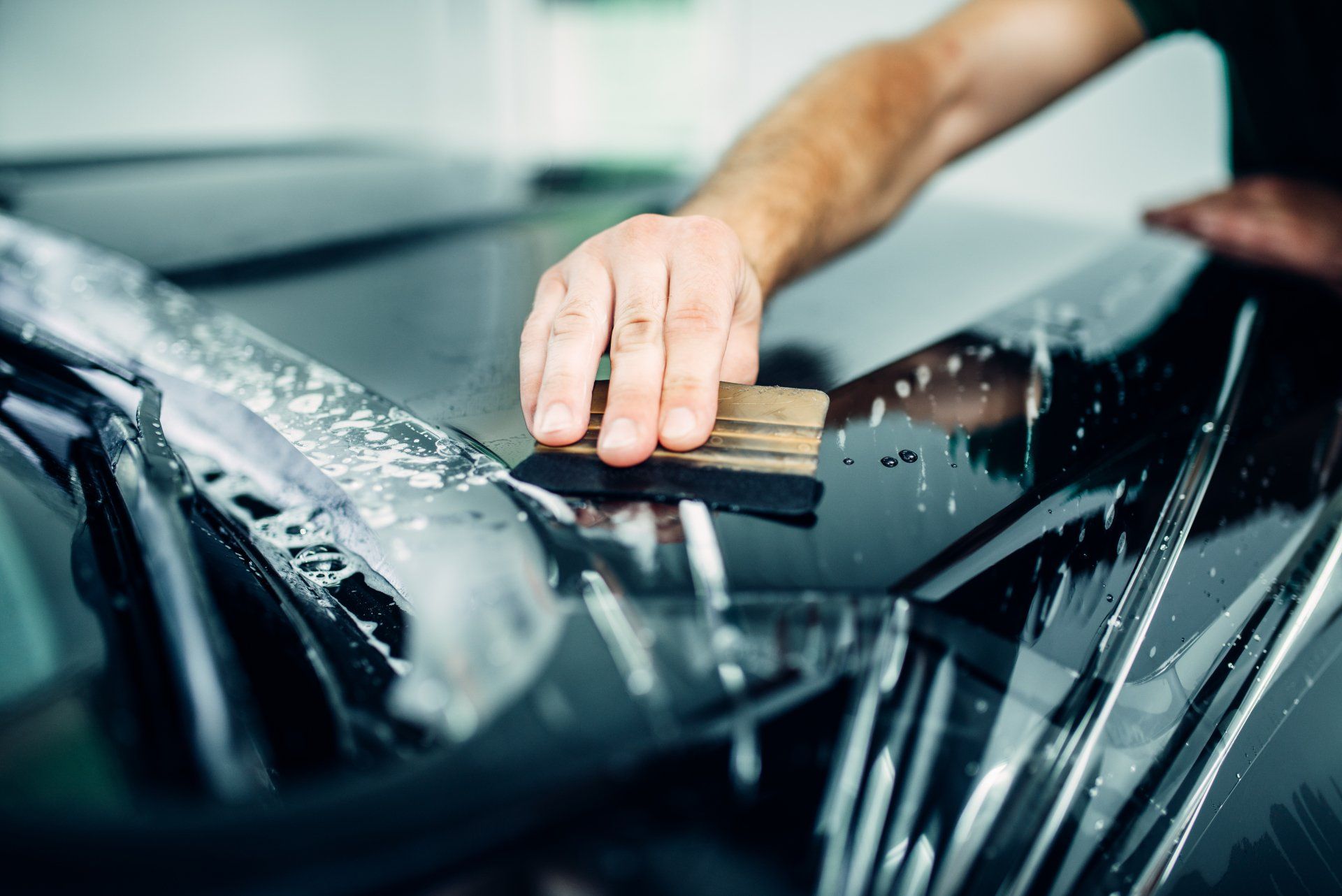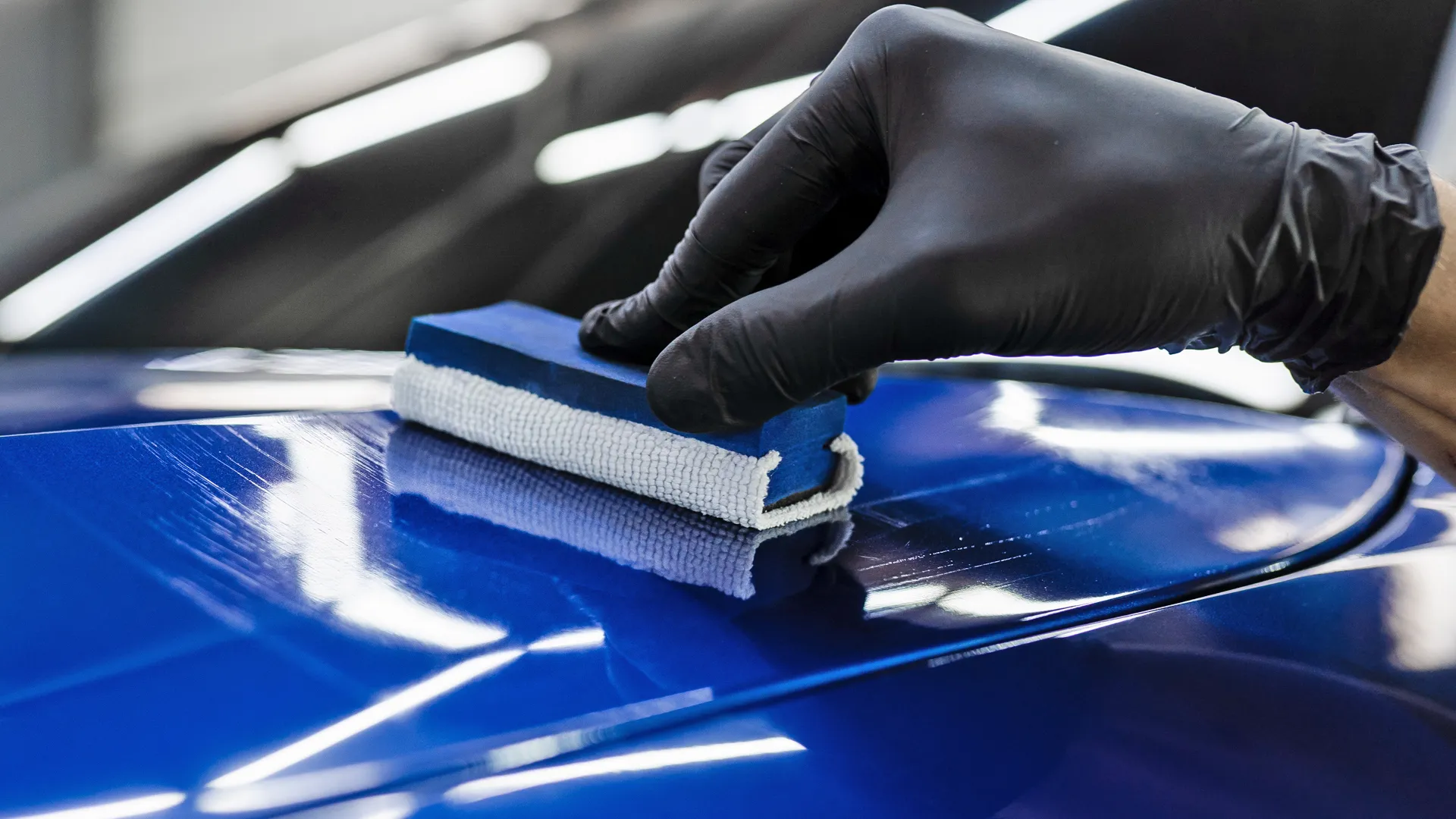What Makes Ceramic Coating the Ultimate Choice for Car Paint Protection?
What Makes Ceramic Coating the Ultimate Choice for Car Paint Protection?
Blog Article
Ceramic Covering vs. Traditional Wax: Which Uses Better Defense?
The dispute between ceramic finishing and standard wax for automobile defense is one that benefits mindful evaluation, especially in terms of resilience, resistance to ecological variables, and general maintenance demands. While ceramic finishes assure prolonged longevity and superior defense against a variety of risks, conventional wax may appeal to those looking for a more budget-friendly, albeit temporary, remedy.
Overview of Ceramic Covering
Ceramic covering has actually gained considerable appeal amongst automobile lovers and specialists alike for its sophisticated safety top qualities. This ingenious solution includes a fluid polymer that chemically bonds to the car's factory paint, creating a durable layer of protection. Unlike traditional wax, which generally lasts for a few weeks to months, ceramic finishes can provide long-lasting defense for several years, relying on the item utilized and application method.

While the initial expense of ceramic finishing might be greater than that of conventional wax, the lasting advantages, consisting of resilience and reduced maintenance regularity, usually validate the investment. As auto innovation proceeds to develop, ceramic layers have become a favored selection for those looking for ideal defense and durability for their vehicles.
Review of Traditional Wax
The appeal of standard wax lies in its simplicity and simplicity of usage, making it a preferred selection amongst car owners looking for to boost their car's appearance and supply a fundamental degree of protection. Typically obtained from natural carnauba or artificial polymers, standard wax forms a slim safety layer over the paintwork. The application process is straightforward, commonly including an easy rubbing with a microfiber towel, making it available to both newbie and seasoned individuals.
Typical wax items are available in numerous solutions, each designed to deal with details requirements, such as improving luster or offering water beading. The adaptability of wax enables usage on different surfaces, consisting of paint, glass, and also plastic trim. While the application can be done by hand or device, the trick is to make certain a clean surface for optimum bond.
Nonetheless, one significant quality of conventional wax is its fairly brief life-span contrasted to contemporary alternatives. Generally offering defense that lasts from a few weeks to a few months, regular reapplication is needed to preserve its efficiency. In spite of these restrictions, traditional wax remains a popular selection for auto lovers that appreciate the aesthetic improvement it supplies.
Secret Protection Features
When considering paint protection for automobiles, it's crucial to comprehend the essential features that differentiate standard wax from advanced alternatives like ceramic layers. One of the main safety characteristics of ceramic coverings is their longevity. Unlike wax, which commonly lasts a few weeks, ceramic layers can withstand for numerous years, offering long-term protection against ecological pollutants.
Ceramic coatings create a hydrophobic surface, pushing back water and protecting against dust, crud, and other debris from adhering to the paint. This attribute not just enhances the lorry's look yet likewise reduces the frequency of washing. Additionally, ceramic finishings offer exceptional UV security, shielding the paint from damaging sun exposure that can lead to fading and oxidation.
On the other hand, typical wax supplies a more temporary barrier against aspects however does not have the resistance to scrapes and chemical discolorations that ceramic finishings use. While wax can enhance gloss, its safety capacities are limited, specifically against harsher environmental factors such as bird droppings, tree sap, and roadway salt. In summary, the key defense features of ceramic coatings considerably beat those of typical wax, making them a premium selection for lasting car treatment.
Application Process Contrast

On the other hand, the application of ceramic layers is extra time-sensitive and complex, frequently requiring professional help for optimum results. The automobile's surface need to be thoroughly cleaned up, sanitized, and polished to remove blemishes before the find out this here finish is applied. When prepared, the finishing is applied in numerous layers, with each layer needing certain healing times, often enhanced by warm lamps. This thorough procedure can extend numerous hours to numerous days, depending on the number of layers and preferred surface.
Inevitably, the selection in between wax and ceramic finish pivots not only on security levels however likewise on the moment, knowledge, and resources offered for their particular applications. - ceramic coating
Expense Analysis and Durability
Expense plays a significant duty in the decision-making procedure between ceramic coatings and traditional waxes. Ceramic coverings usually command a higher upfront investment, varying from $500 to $2,000 depending on the top quality, brand name, and professional application solutions. This first cost can be credited to the sophisticated modern technology and materials utilized in ceramic formulas, which offer superior resilience and security.
On the other hand, typical waxes are much more budget-friendly, usually costing between $20 to $100 for DIY applications. Nonetheless, the longevity of wax products is restricted, commonly calling for reapplication every few months to keep their protective high qualities. This persisting cost can accumulate in time, making wax less economical over time.
Ceramic finishings, while a lot more expensive at first, deliver long-lasting results, typically going beyond two to five years with proper maintenance. This long life can supply considerable financial savings gradually, especially for vehicle owners that focus on defense and visual conservation - ceramic coating. Ultimately, the choice between traditional waxes and ceramic finishings should think about both initial prices and lasting value, considering the maintenance needs and desired security degree for the vehicle
Verdict
In recap, ceramic finishes offer premium protection for vehicle paint hop over to these guys compared to conventional wax, offering enhanced longevity, resistance to ecological aspects, and hydrophobic homes. While the first financial investment for ceramic finishes is higher, their longevity and lowered maintenance requirements justify the expense. Inevitably, for those looking for long-term automobile care and security, ceramic coatings stand for an extra reliable solution than conventional wax, which uses only short-term advantages.
The debate between ceramic layer and standard wax for automobile security is one that qualities cautious exam, particularly in terms of sturdiness, resistance to environmental factors, and overall maintenance requirements.When considering paint protection for lorries, it's crucial to recognize the key functions that differentiate typical wax from even more sophisticated alternatives like ceramic coverings. In summary, the vital protection attributes of ceramic layers dramatically beat those of conventional wax, making them an exceptional option for resilient automobile treatment.
Ultimately, the selection in between ceramic coatings and standard waxes should think about both first costs and long-term worth, factoring in the upkeep requirements and preferred defense level for the lorry.
In summary, ceramic finishes offer superior defense for lorry paint compared to standard wax, offering improved resilience, resistance to ecological elements, and hydrophobic homes.
Report this page